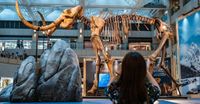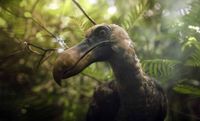In a groundbreaking announcement that has captivated the scientific community and the public alike, Colossal Biosciences, a Texas-based biotechnology company, claims to have resurrected the dire wolf, a species that has been extinct for over 12,000 years. This bold endeavor has reignited debates about the feasibility and ethics of de-extinction, as well as the implications for conservation efforts worldwide.
On April 8, 2025, Colossal's CEO Ben Lamm shared the news that three dire wolf pups, named Romulus, Remus, and a female born shortly after, were born on October 1, 2024. According to Lamm, the pups were created using ancient DNA extracted from a 13,000-year-old tooth and a 72,000-year-old skull. "Our team took DNA from a 13,000-year-old tooth and a 72,000-year-old skull and made healthy dire wolf puppies," he stated. This announcement, however, has not been without skepticism.
Leading scientists, particularly from New Zealand, have questioned the validity of Colossal's claims. Associate Professor Nic Rawlence from the University of Otago remarked, "This is not a de-extincted dire wolf; rather, it’s a ‘hybrid'. And importantly, it's what they think are the important dire wolf-like characteristics.” Rawlence pointed out that dire wolves diverged from gray wolves approximately six million years ago and that the genetic modifications made—20 changes to 14 genes—are insufficient to truly recreate the species.
Colossal Biosciences has made headlines before for its ambitious projects aimed at bringing back other extinct species, including the woolly mammoth, dodo, and thylacine (Tasmanian tiger). The company has been actively working on these projects since its founding in 2021 and currently employs around 130 scientists. In March 2025, Colossal announced a $3 million investment in the University of Melbourne to support research on genetically modifying frogs to combat chytrid fungus, a disease responsible for the decline of numerous amphibian species.
Despite the excitement surrounding the dire wolf announcement, experts remain cautious. Professor Philip Seddon, also from the University of Otago, dismissed the notion that the new pups are real dire wolves, stating, "Certainly, this involves advances in genetic technology, and these might have applications for the conservation of existing species—but the return of dire wolves? No.” He emphasized that while the technology is impressive, it does not equate to bringing back a species that has been extinct for millennia.
Associate Professor Michael Knapp, also from the University of Otago, echoed this sentiment, stating, "These new dire wolves are genetically almost certainly closer to gray wolves than to ancient dire wolves, but they look more like dire wolves than gray wolves. These are not the dire wolves that went extinct more than 10,000 years ago, as the press release may suggest.”
Colossal's work has not only focused on resurrecting extinct species but also on enhancing the genetic diversity of endangered species. On the same day as the dire wolf announcement, the company revealed it had successfully cloned red wolves, a critically endangered species. This cloning adds genetic complexity to a population that has been on the brink of extinction since the 1960s.
In addition to the dire wolf, Colossal is also making strides in the revival of the woolly mammoth. The company is working on editing the remaining 2% of mammoth genes, given that they share about 98% of their DNA with the Asian elephant. The timeline for a mammoth embryo is projected for late 2026, with the first animals potentially being born by 2028.
Colossal is also attempting to bring back the dodo, a flightless bird that became extinct in 1681. The company is sequencing the dodo genome using DNA extracted from a preserved skull in the Natural History Museum of Denmark, with hopes of having the dodo back by 2028. Interestingly, Colossal plans to use chickens as surrogates to hatch dodo-like offspring, aiming for these birds to grow up with reproductive cells carrying the dodo’s characteristics.
The revival of the thylacine is another ambitious project. The thylacine, or Tasmanian tiger, went extinct in the early 20th century. Colossal is using the dunnart, a small marsupial mouse, as the closest living relative to modify genetically, aiming to develop the physical traits of the thylacine.
As these projects unfold, they raise significant ethical and ecological questions. The feasibility of reintroducing these species into their original habitats is a major concern. While some scientists are optimistic about the potential benefits of such endeavors for biodiversity, others warn of the unforeseen consequences that could arise from playing with nature.
Colossal's achievements have garnered attention not only from the scientific community but also from influential figures like Elon Musk, who expressed his enthusiasm about the prospect of a miniature woolly mammoth on social media. "Please make a miniature pet woolly mammoth," Musk tweeted, illustrating the intersection of science, technology, and popular culture.
As the world watches closely, Colossal Biosciences' work represents a significant leap forward in the field of genetic engineering and de-extinction. While the claims of reviving the dire wolf may be met with skepticism, the company's ongoing projects could pave the way for groundbreaking advancements in conservation and genetic science. The future of these ancient species remains uncertain, but one thing is clear: the conversation about extinction and its reversal is just beginning.




